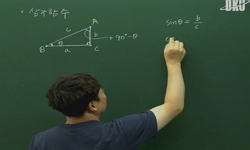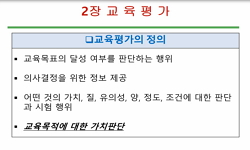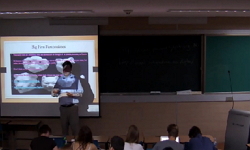Micro timing refers to time differences when people feel differences in time, but they do not feel this time difference in a different rhythmic pattern, but rather they understand the same rhythm as something with different nuances. The purpose of thi...
http://chineseinput.net/에서 pinyin(병음)방식으로 중국어를 변환할 수 있습니다.
변환된 중국어를 복사하여 사용하시면 됩니다.
- 中文 을 입력하시려면 zhongwen을 입력하시고 space를누르시면됩니다.
- 北京 을 입력하시려면 beijing을 입력하시고 space를 누르시면 됩니다.

‘우조 초수대엽’의 연주음원에 나타난 박 단위에서의 미시적 타이밍(micro timing)에 대한 분석 = Micro timing analysis at beat level in the instrumental version of the Korean traditional song, U-jo Chosudaeyeop
한글로보기https://www.riss.kr/link?id=A106395337
- 저자
- 발행기관
- 학술지명
- 권호사항
-
발행연도
2019
-
작성언어
Korean
- 주제어
-
등재정보
KCI등재후보
-
자료형태
학술저널
- 발행기관 URL
-
수록면
153-184(32쪽)
- DOI식별코드
- 제공처
- 소장기관
-
0
상세조회 -
0
다운로드
부가정보
다국어 초록 (Multilingual Abstract)
Micro timing refers to time differences when people feel differences in time, but they do not feel this time difference in a different rhythmic pattern, but rather they understand the same rhythm as something with different nuances. The purpose of this study is to analyze micro-timing at beat level in the performance of instrumental version of the Korean traditional song, Ujo Chosudaeyeop. At this point, we ask whether the change in the length of the beat, is completely arbitrary or there is any rule for how it relates to the temporal structure of music. For this study, four times performances of Daegeum, Geomungo, and Janggu trio by the same performers were compared and investigated. The results showed that the change in the IOI value of beats was related to the metric structure composed of 11 beats and 5 beats. This can be interpreted a 16-beats of gagok-jangdan as a metric structure in which 11 beats and 5 beats are alternating rather than consciously playing the 16-beats as one unit. In addition, when this metric structure collides with the grouping structure of the melody, the grouping of the melody has a higher priority. Investigation of what specific pattern appears when three or two beats are tied up reveals a pattern with the longer first and the shorter second beats (about 1.14: 1).
국문 초록 (Abstract)
미시적 타이밍은 사람들이 시간적으로 다른 차이를 느끼지만 이 시간차를 리듬형의 변화로 느끼는 것이 아니라 같은 리듬인데 다른 뉘앙스를 가진 어떤 것으로 이해하는 시간차를 이른다. ...
미시적 타이밍은 사람들이 시간적으로 다른 차이를 느끼지만 이 시간차를 리듬형의 변화로 느끼는 것이 아니라 같은 리듬인데 다른 뉘앙스를 가진 어떤 것으로 이해하는 시간차를 이른다. 본 연구가 박의 미시적 타이밍 분석을 통해 얻고자 하는 바는 연주자가 박의 흐름을 서로 맞추어 가며 연주함에 있어 기계적으로 박을 연주하는 것이 아니라 음악의 흐름을 타며 박을 짚을 것인데, 이 때 그 유동성, 즉 박의 길이의 변화가 완전히 임의적인가 아니면 어떤 규칙이 있는가, 있다면 그 규칙은 음악의 시간적 구조 형성과 어떤 관련이 있는가를 보고자 함에 있다. 연구대상으로 한국 전통 가곡 중 「우조 초수대엽」의 대금, 거문고, 장구의 삼중주를 선택하여 동일한 연주자들에 의한 네 번에 걸친 연주를 비교·관찰하였다. 연구결과로, 박의 IOI 값의 변화는 장의 구분, 어절구분, 박자적 구조 중 박자적 구조와 관련을 보이는 것으로 나타났다. 또한 연주자들이 16박장단을 하나로 의식하고 연주하는 것이 아니라 11박과 5박이 교대로 나타나는 시간적 구조로 이해하고 있다는 것도 확인되었다. 이 구조가 선율의 그루핑과 부딪힐 때에는 선율의 그루핑이 더 우선적으로 영향을 미치는 것으로 나타났다. 세 박씩 묶여질 때 어떤 특정한 패턴이 나타나는가에 대한 조사에서는 세 박씩 묶여질 때 첫 박의 길이가 긴 패턴(약 1.14:1)이 나타난다는 점도 발견되었다.
1 박미경, "현행여창가곡보의 비판적 검토" 17 : 9-38, 1996
2 이혜구, "한국음악논고" 서울대학교출판부 15-27, 1995
3 이미경, "판소리에서의 리듬적 동조 현상 연구: Clayton의 시계식 분석법의 적용" 세계음악학회 (31) : 63-85, 2014
4 박미경, "여창가곡 한바탕의 리듬구조 연구-배자기보의 음악사적 분석에 근거하여-" 한국음악사학회 (32) : 37-71, 2004
5 이미경, "서울굿 중 ‘신장타령’의 타이밍에 대한 미시적 분석" 한국음악교육공학회 (25) : 37-56, 2015
6 이미경, "생각한다: 음악학 연구의 동향" 민족음악학회 (47) : 5-13, 2014
7 Wesolowski, Brian C., "Timing Deviation in Jazz Performance: The Relationships of Selected Musical Variables on Horizontal and Vertical Timing Relations: A case study" 44 (44): 75-94, 2016
8 Keil, C., "The Theory of Participatory Discrepancies : a Progress Report" 39 (39): 1-19, 1995
9 Cooper, G. W., "The Rhythmic Structure of Music" The university of Chicago 1963
10 Cook, Nicholas, "Taking it to the Bridge: Music as Performance" The University of Michigan press 70-85, 2013
1 박미경, "현행여창가곡보의 비판적 검토" 17 : 9-38, 1996
2 이혜구, "한국음악논고" 서울대학교출판부 15-27, 1995
3 이미경, "판소리에서의 리듬적 동조 현상 연구: Clayton의 시계식 분석법의 적용" 세계음악학회 (31) : 63-85, 2014
4 박미경, "여창가곡 한바탕의 리듬구조 연구-배자기보의 음악사적 분석에 근거하여-" 한국음악사학회 (32) : 37-71, 2004
5 이미경, "서울굿 중 ‘신장타령’의 타이밍에 대한 미시적 분석" 한국음악교육공학회 (25) : 37-56, 2015
6 이미경, "생각한다: 음악학 연구의 동향" 민족음악학회 (47) : 5-13, 2014
7 Wesolowski, Brian C., "Timing Deviation in Jazz Performance: The Relationships of Selected Musical Variables on Horizontal and Vertical Timing Relations: A case study" 44 (44): 75-94, 2016
8 Keil, C., "The Theory of Participatory Discrepancies : a Progress Report" 39 (39): 1-19, 1995
9 Cooper, G. W., "The Rhythmic Structure of Music" The university of Chicago 1963
10 Cook, Nicholas, "Taking it to the Bridge: Music as Performance" The University of Michigan press 70-85, 2013
11 Friberg, A., "Swing Ratios and Ensemble Timing in Jazz Performance: Evidence for a Common Rhythmic Pattern" 19 : 333-349, 2002
12 Dodson, A., "Performance and Hypermetric Transformation: An Extension of the Lerdahl-Jackendoff Theory"
13 Butterfield, M., "Participatory Discrepancies and the Perception of Beats in Jazz" 27 : 157-176, 2010
14 McGuiness, A., "Microtiming Deviation in Groove" Austrailian National University 2006
15 Doffman, "Feeling the Groove: Shared Time and Its Meanings for Three Jazz Trios" The Open University 2008
16 Repp, B. H., "Expressive timing in Schumann's “Träumerei”: An Analysis of Performances by Graduate Student Pianists" 98 : 2413-2427, 1995
17 Ashley, R., "Do[n’t] Change a Hair for Me: The Art of Jazz Rubato" 19 : 311-322, 2002
18 Repp, B. H., "Diversity and Commonality in Music Performance: An Analysis of Timing Microstructure in Schumann’s “Traeumerei" 92 : 2546-2568, 1992
19 Ellis, M. C., "An Analysis of “Swing” Subdivision and Asynchronization in Three Jazz Saxophonists" 75 : 707-713, 1991
20 Rose, R. F., "An Analysis of Timing in Jazz Rhythm Section Performance" University of Texas at Austin 1989
21 Shaffer, L. H., "Action and Perception in Rhythm and Music" R.Swed. Acad. Music 139-152,
22 Lerdahl, F., "A generative Theory of Tonal Music" MIT Press 1983
23 Todd, N. P., "A Model of Expressive Timing in Tonal Music" 3 : 33-58, 1985
동일학술지(권/호) 다른 논문
-
- 민족음악학회
- 이수정
- 2019
- KCI등재후보
-
- 민족음악학회
- 김성혜
- 2019
- KCI등재후보
-
1950년대 양악작곡가들이 상상한 국민음악: ‘국민’과 ‘민족’ 사이에서
- 민족음악학회
- 김은영
- 2019
- KCI등재후보
-
- 민족음악학회
- 이은진
- 2019
- KCI등재후보




 KISS
KISS








